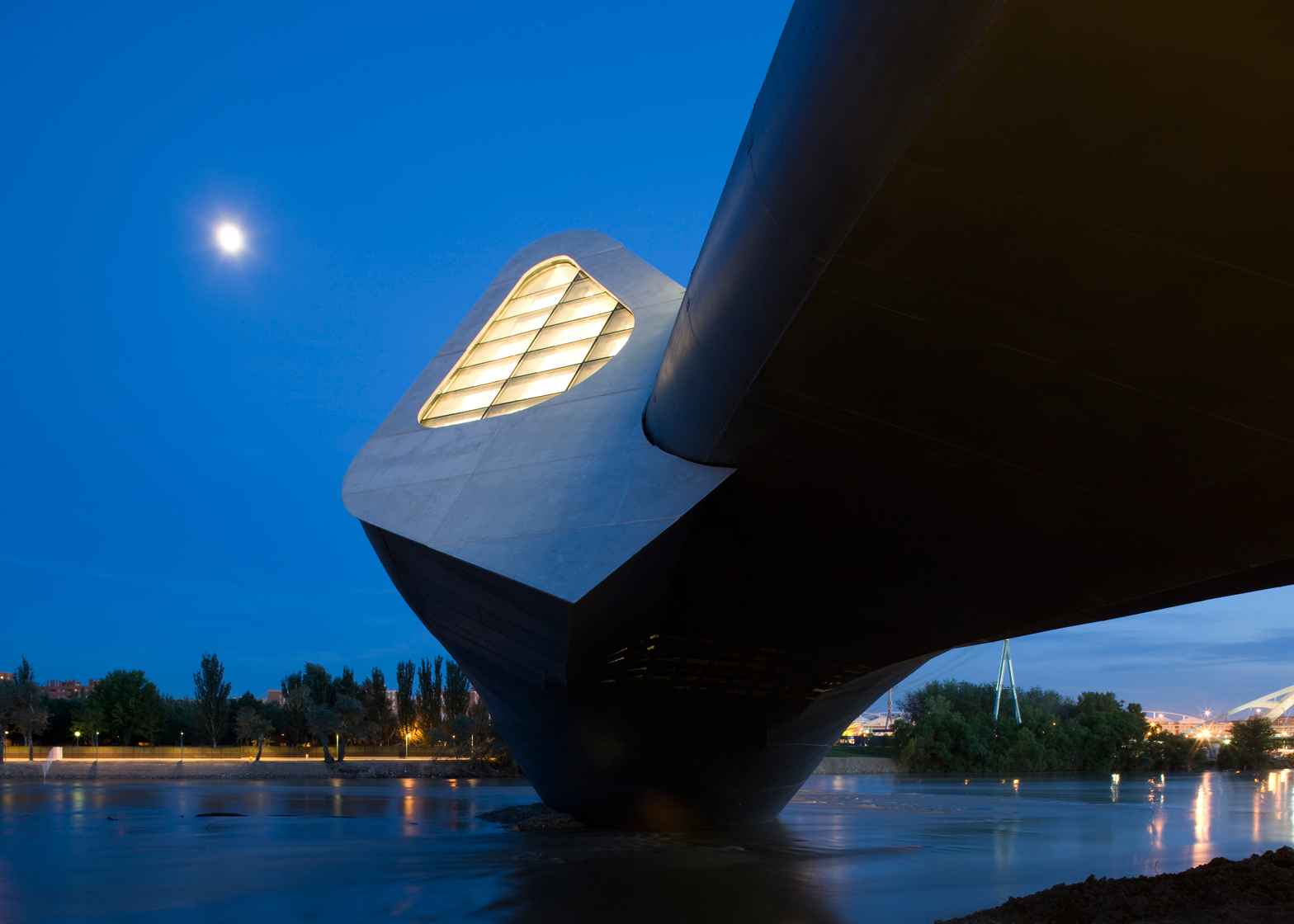The final addition to our alphabetical countdown of contemporary bridges is Zaha Hadid's Zaragoza Bridge Pavilion, which formed the gateway to the World Expo in 2008.
The 270-metre-long covered structure functioned as both a pedestrian crossing over the Ebro river and an exhibition pavilion during the Expo in Spain. It was also Zaha Hadid's first completed bridge design.
Designed to imitate a gladiola flower, the bridge comprises four structural pods. These create four different enclosures that intersect and brace one other, all clad in triangular fibre-cement panels.
The two larger pods are both entirely enclosed, so were used as the main exhibition galleries.
The others are clad with a single-layer skin that leaves the steel structure exposed. These are both punctured by small triangular window apertures, offering views down onto the water.
Hadid's architecture firm collaborated with engineer Arup on the project. Approximately 62,500 prefabricated steel structural elements went into its construction.
"The Bridge Pavilion is a seminal project for the practice," said Zaha Hadid at the time. "Our ambitions towards creating fluid, dynamic and therefore complex structures has been aided by technological innovations, and applying this knowledge to the Bridge Pavilion has been a very rewarding process."
After the Zaragoza Expo ended, the site was purchased by a local savings bank for use in future expositions.
Hadid has since completed the Sheikh Zayed Bridge in Abu Dhabi, a 842-metre-long bridge connecting Abu Dhabi Island with the mainland, and recently won a competition to design a 920-metre-long bridge across the mouth of the Tamsui River in Taipei.
See all the bridges from our 2015 A-Zdvent calendar »
Images are courtesy of Shutterstock, unless stated otherwise.

